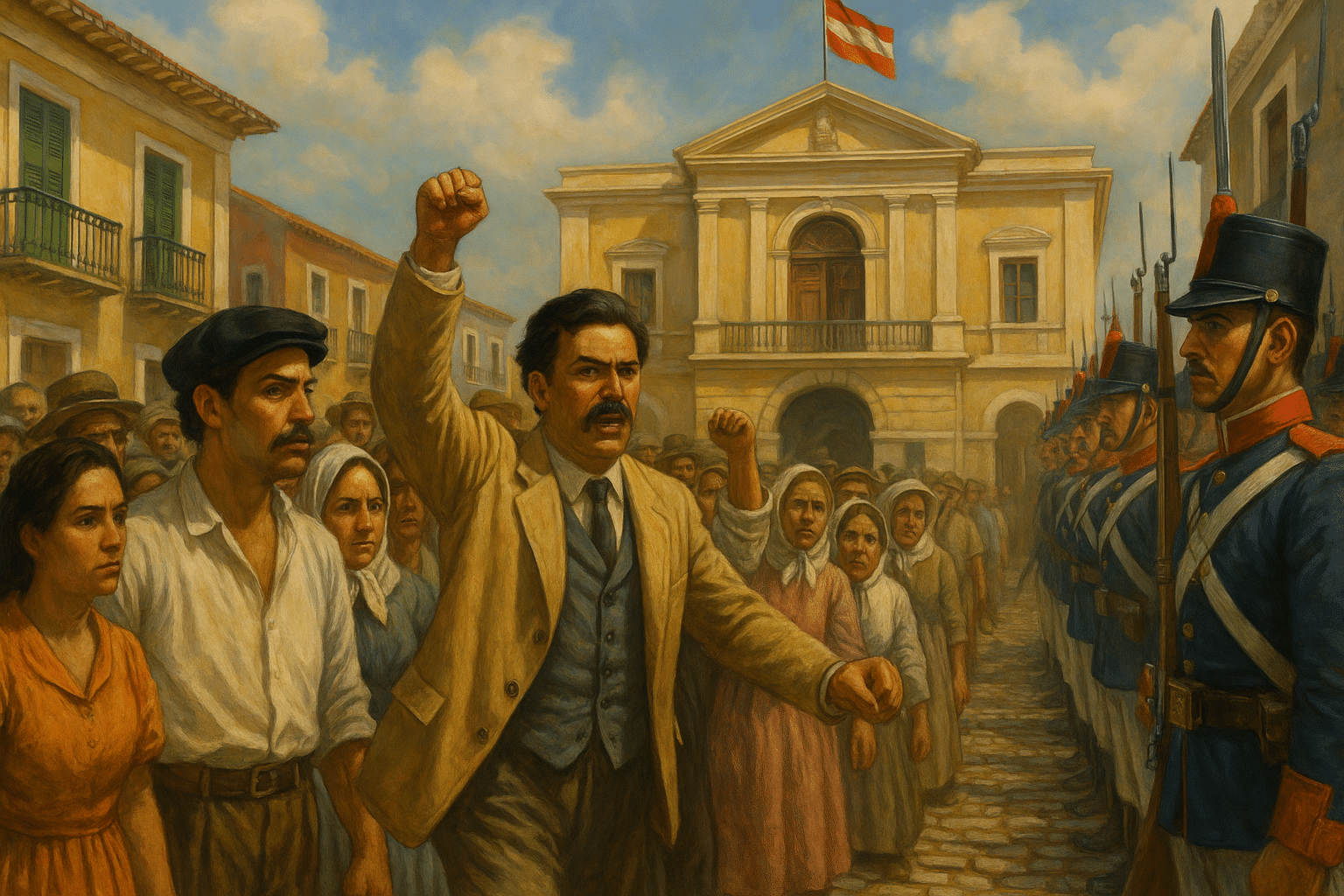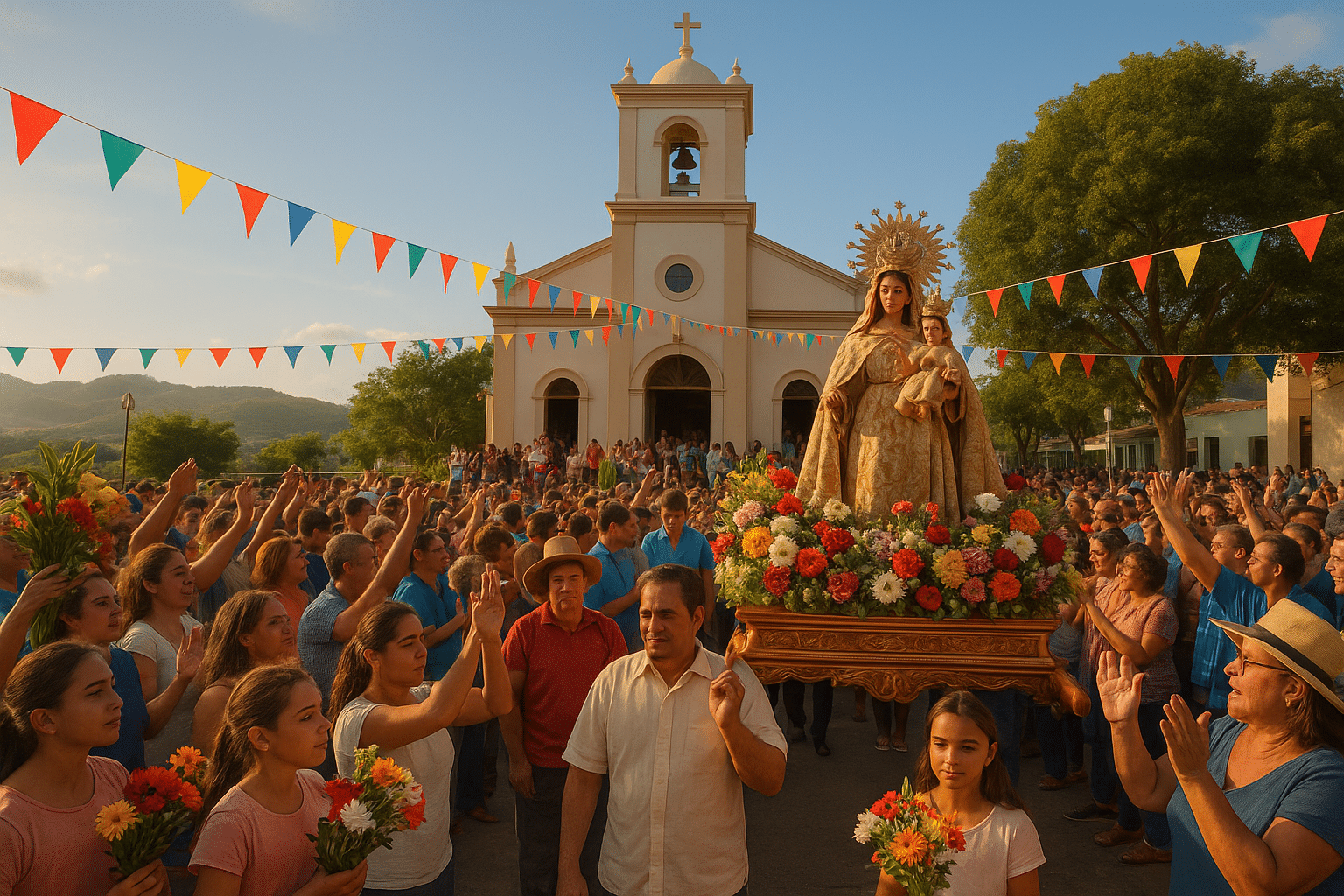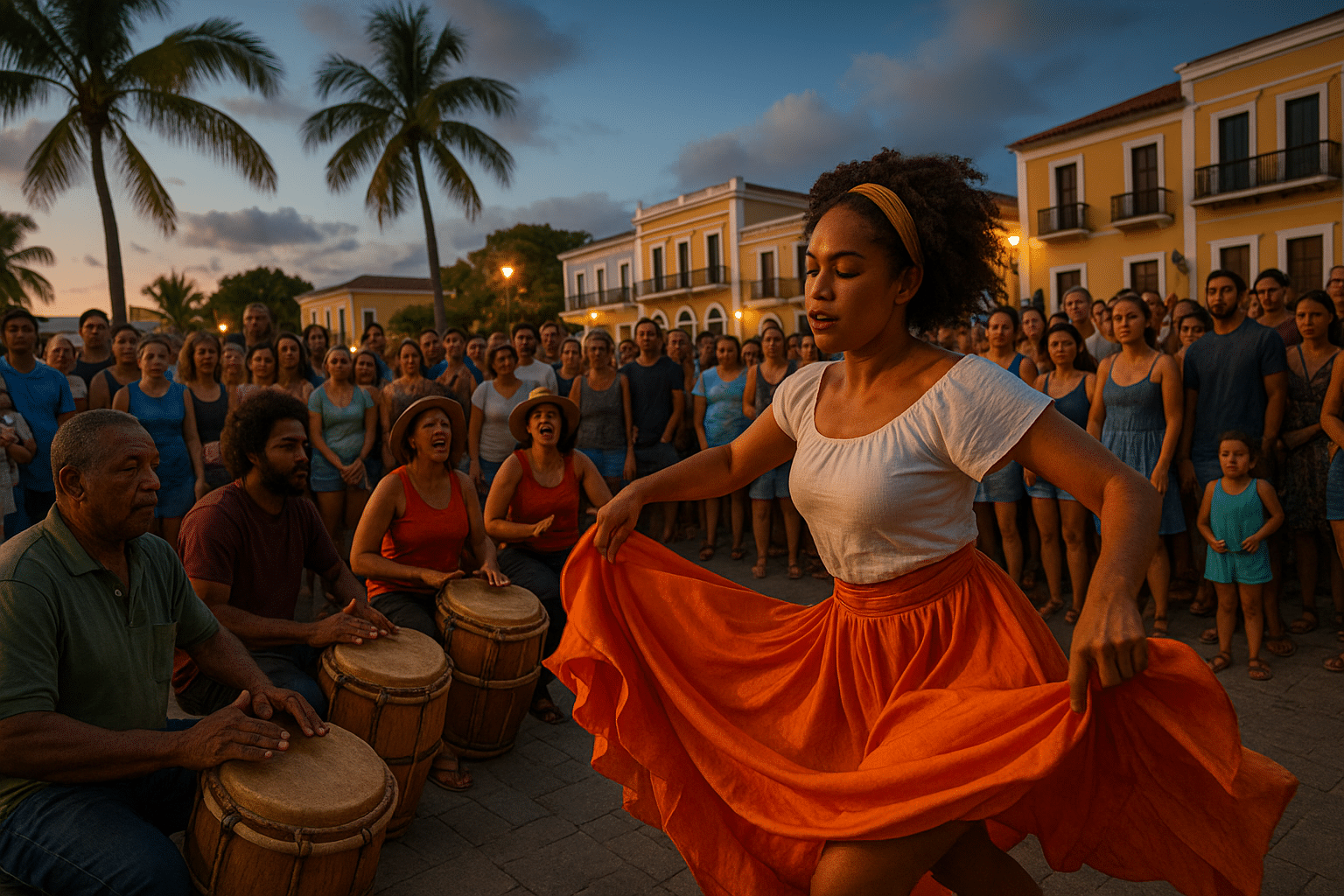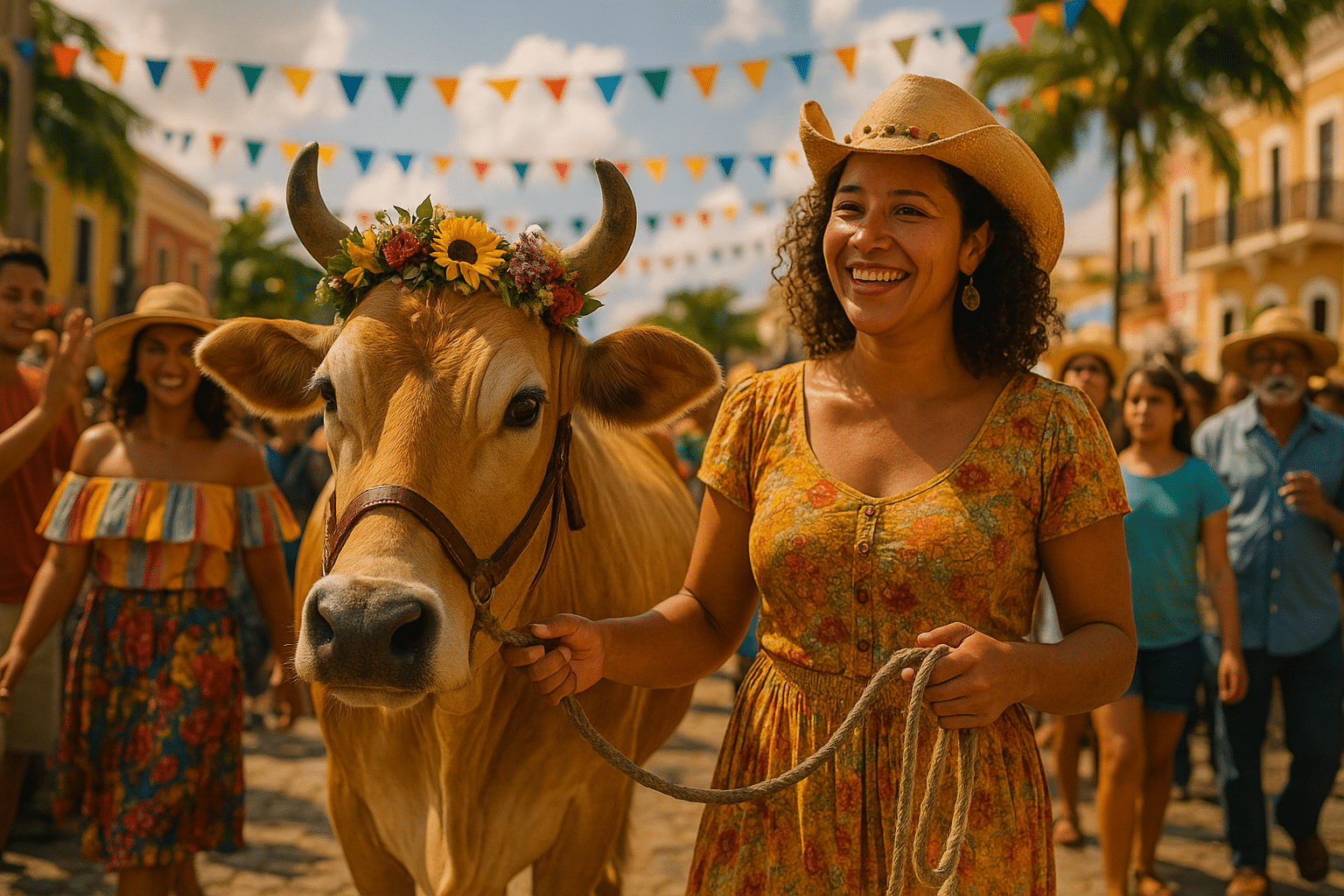A Brief History of Puerto Rico
Puerto Rico’s vitality comes from over 500 years of rich history and a blend of diverse cultures.
The island’s cultural depth influences nearly every aspect of its identity. The fusion of Taíno, African, and Spanish traditions has created a unique Puerto Rican identity that captures the spirit of all three heritages. Visitors can discover Spanish colonial architecture and historic sites, sample dishes and enjoy dances rooted in African traditions, and even hear Taíno words still used today. Puerto Rico is truly a cultural melting pot.
This distinctive identity is reflected in every landscape, flavor, and sound throughout the island. Keep reading to learn more about Puerto Rico’s fascinating history.
Taíno Origins: The First Inhabitants of Puerto Rico
The Taínos were the first known inhabitants of Puerto Rico, living on the island long before the arrival of the Spanish. Laura Ortiz, a Ph.D. candidate in History and founder of Sofrito Tours, explains that the Taínos were part of the Arawak group that migrated from areas near present-day Venezuela and the Orinoco River between 500 BCE and 600 CE, eventually settling in Puerto Rico and throughout the Caribbean.
They lived in well-organized villages called yukayekes, each governed by a cacique or chief. It’s important to note that Taíno society followed a matrilineal system, meaning leadership was inherited through the maternal line. Their economy was based on subsistence farming, cultivating cassava to make casabe bread, as well as growing corn.
Spiritually, the Taínos practiced animism, believing that spirits inhabited people, animals, and natural places such as the El Yunque rainforest. They worshipped various deities through sacred objects called cemíes, including prominent gods like Guabancex, the goddess of storms, and Yukiyú, the god of peace and the mountains.
Although little is known about Taíno chiefs before Spanish contact, historical records highlight leaders such as Agüeybaná II, Urayoán, Coxiguex, Yauco, Jumacao, Loquillo, Orocobix, and Guayama as the last Taíno caciques, with Agüeybaná II being the most prominent. The Taínos called their island Borikén or Borinquen, meaning “Land of the Brave and Noble Lord.”
The arrival of the Spanish in 1493 marked the beginning of a devastating period for the Taínos. Already dealing with invasions from the Caribs—another Indigenous group that entered the Antilles—the Taínos now faced the overwhelming impact of Spanish colonization. This led to a rapid population decline, nearly erasing the original Boricua people over time.
Puerto Rico’s Indigenous Heritage
Although the Taínos have not inhabited the island for more than 400 years, Puerto Ricans continue to proudly celebrate and preserve their Indigenous roots. Visitors can explore this rich cultural heritage by visiting important sites like the Caguana Indigenous Ceremonial Center in Utuado and the Tibes Indigenous Ceremonial Center in Ponce. These historic sites offer valuable insight into Taíno ceremonies, customs, and daily life, as well as their community organization.
Another notable attraction is the Museo del Cemí, a museum designed in the shape of a cemí—one of the most sacred spiritual symbols of the Taínos. The museum features a broad collection of artifacts and exhibits that vividly illustrate Taíno history and spiritual beliefs.
The Arrival of Europeans in Puerto Rico
Christopher Columbus first arrived in Puerto Rico in 1493 during his second voyage to the Americas. The Spanish colonization that followed transformed the island’s agricultural landscape by introducing crops such as sugarcane, coffee, and tobacco, which became major exports. As the Taíno population declined, the Spanish began bringing enslaved Africans to meet the growing demand for labor.
Laura Ortiz highlights the significant role that enslaved Africans played in shaping Puerto Rico’s economy and culture:
“They were brought from West Africa mainly to work on sugar plantations, which became fundamental to the island’s economy. Their cultural impact also influenced coastal cuisine by introducing ingredients like coconut, plantains, rice, and beans. Additionally, they contributed rich traditions such as bomba music, which is both a form of resistance and a celebration of African heritage.”
Due to its strategic location, Puerto Rico served as a vital military stronghold for Spain. Throughout its history, the island resisted invasion attempts by the Dutch, French, and English. To protect the territory, the Spanish built imposing fortresses such as El Morro and San Cristóbal, which remain important historical monuments symbolizing Puerto Rico’s strength and enduring legacy.
How Puerto Rico Got Its Name
When Columbus first arrived, he named the island San Juan Bautista in honor of Saint John the Baptist. However, after the Spanish discovered abundant gold in its rivers, the name was changed to Puerto Rico, meaning “Rich Port.” Meanwhile, the capital adopted the original name San Juan, which it retains to this day.
Puerto Rico’s Brief Period of Autonomy
By the late 19th century, Puerto Rico’s desire for independence from Spanish rule had intensified. Although an initial rebellion in San Juan was quickly suppressed by Spanish forces, unrest spread across the island. In response to these challenges, the Spanish crown granted Puerto Rico limited self-government, allowing for greater local administration. This change also facilitated increased trade with other European colonies and with the United States.








